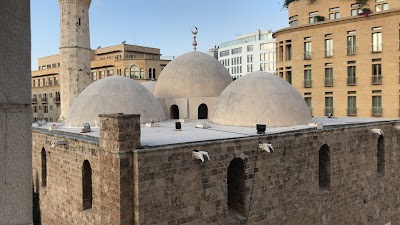Beirut Souks (أسواق بيروت)
Overview
Beirut Souks: A Fusion of History and Modernity
Nestled in the heart of Beirut, Lebanon, the Beirut Souks are a remarkable testament to the city’s rich history and modern aspirations. This vibrant commercial hub has roots that stretch back to ancient times, evolving through the layers of history while enduring conflicts and subsequent reconstructions.
Originally, the souks were a bustling network of streets filled with merchants offering spices, textiles, gold, and a diverse array of goods. This lively center of trade and cultural exchange attracted traders from various corners of the globe, each contributing their unique offerings. Over the years, the souks underwent significant transformations, particularly during the French Mandate in Lebanon, which introduced elements of modernization to the area.
The Lebanese Civil War (1975-1990) had a devastating impact on the Beirut Souks, transforming what was once a thriving marketplace into a landscape of ruins. Much of the souks lay within the Green Line, the boundary that divided East and West Beirut during the conflict, leaving them heavily scarred by fighting and neglect.
In the post-war era, Solidere—a private company with public objectives—took the lead in a major initiative to rebuild downtown Beirut, including the souks. This ambitious reconstruction project aimed to preserve the historical significance of the area while infusing contemporary design sensibilities. Renowned architects like Rafael Moneo and Kevin Dash played pivotal roles in reimagining the souks, blending Beirut’s storied past with its dynamic present and hopeful future.
The newly revitalized Beirut Souks, which opened to the public in phases starting in 2009, now cover over 100,000 square meters. This vibrant area is home to more than 200 shops, ranging from high-end international brands to charming local boutiques, as well as numerous restaurants and entertainment venues. The souks have successfully rejuvenated the essence of the traditional marketplace while providing modern conveniences.
Architecturally, the development displays a harmonious blend of traditional Middle Eastern and contemporary styles. The pedestrian-friendly design features shaded walkways, public squares, and a mix of covered and open spaces that reflect the social and commercial functions of the old souks. Original archaeological finds uncovered during construction, including Phoenician, Roman, and Ottoman remains, are thoughtfully integrated into the landscape, offering visitors a tangible connection to the region's rich history.
Sustainability was a cornerstone of the project, with a focus on environmentally-friendly practices. Efficient energy use, water conservation, and waste management strategies were incorporated, aligning the souks with modern environmental standards and ensuring their status as a landmark for future generations.
Beyond shopping, the Beirut Souks serve as a vibrant cultural hub, hosting exhibitions, festivals, and various events throughout the year that celebrate the diversity and dynamism of Beirut’s populace. They have evolved into a pivotal point for social and cultural exchanges, fostering a sense of community and resilience among the people of Beirut.
Today, the Beirut Souks stand resilient and vibrant, symbolizing the city's enduring spirit as it strives to recover and flourish amid numerous challenges. With their unique blend of ancient heritage and contemporary flair, the souks have become an indispensable part of Beirut’s landscape, inviting visitors to explore and experience the rich tapestry of the city.









